If you notice brown spots on your peace lily, don’t panic. In most cases, these brown spots are harmless and can be easily fixed. There are a few different reasons why brown spots may appear on peace lilies, and fortunately, there are just as many solutions. Keep reading to learn more about the causes of brown spots on peace lilies and what you can do to fix them.
How to Identify Peace Lily Brown Spots
If you notice brown spots on your peace lily, it is important to identify the cause in order to find the best solution.
One common cause of brown spots on peace lilies is a fungal disease called botrytis. The best way to control botrytis is to water your peace lily less frequently, and to make sure the plant has good drainage. This disease is caused by too much moisture, and results in brown spots on the leaves.
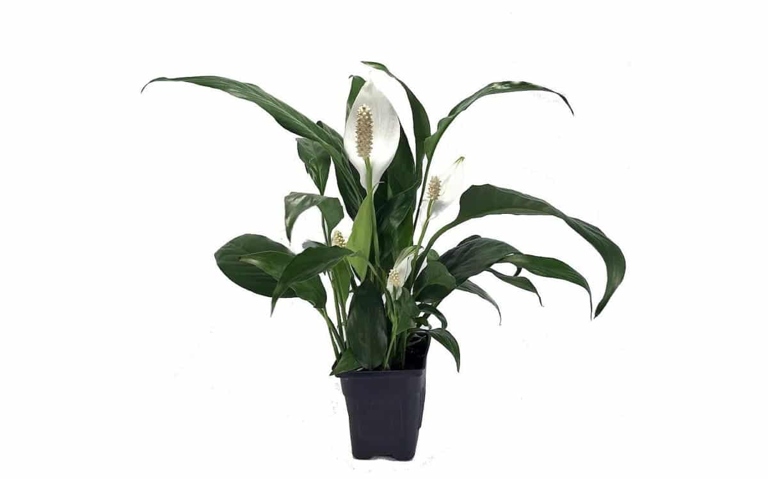
Another common cause of brown spots is sunburn. Peace lilies are native to tropical rainforests, and do not tolerate direct sunlight well. If you notice brown spots on your peace lily after moving it to a sunny location, move it back to a shadier spot.
If you can’t identify the cause of the brown spots on your peace lily, you can try a general fungicide. Be sure to follow the directions on the label carefully, as peace lilies are sensitive to chemicals.
With a little investigation, you can figure out what is causing the brown spots on your peace lily. Once you know the cause, you can take the appropriate steps to solve the problem.
Peace Lily Brown Spots on Leaves
If you notice brown spots on the leaves of your peace lily, don’t panic! In most cases, these brown spots are harmless and can be easily fixed.
One of the most common causes of brown spots on peace lily leaves is too much sun exposure. To fix this, simply move your peace lily to a spot that gets indirect or filtered sunlight. If your peace lily is placed in a spot that gets direct sunlight, the leaves can start to brown.
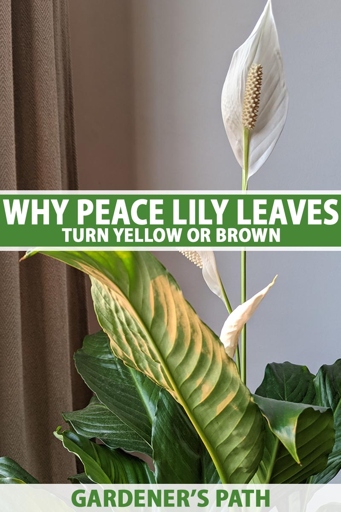
Another common cause of brown spots on peace lily leaves is overwatering. If you water your peace lily too often, the roots can start to rot and the leaves can turn brown. To fix this, water your peace lily only when the soil is dry to the touch.
If the brown spots don’t go away, or if the leaves start to turn yellow or brown, then you may need to consult a professional. If you notice brown spots on your peace lily leaves, try these simple solutions first.
Brown Spots And Streaks on The Leaf Surfaces
If you notice brown spots and streaks on the leaf surfaces of your peace lily, it is likely caused by one of two things: too much sun or too much water.
Move the plant to a location that gets more sun. If the brown spots are on the leaves that are farthest from the sun, then the plant is not getting enough sun. If the brown spots are on the leaves that are closest to the sun, then the plant is getting too much sun. Move the plant to a location that gets less sun.
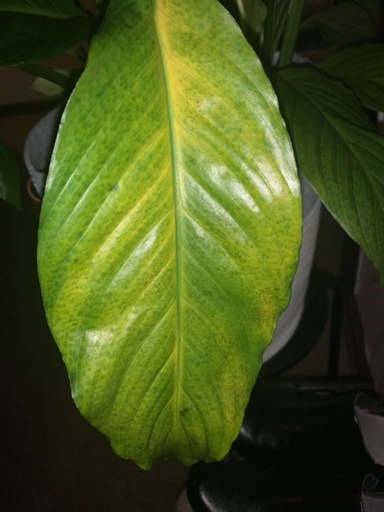
If the brown spots are on the leaves that are getting the least water, then the plant is not getting enough water. If the brown spots are on the leaves that are getting the most water, then the plant is getting too much water. Allow the soil to dry out between watering. Water the plant more often.
Browning On Leaf Tips or Margins
If you notice browning on the tips or margins of your peace lily’s leaves, it could be a sign of several different problems. Most commonly, browning is caused by too much direct sunlight, too little water, or a nutrient deficiency.
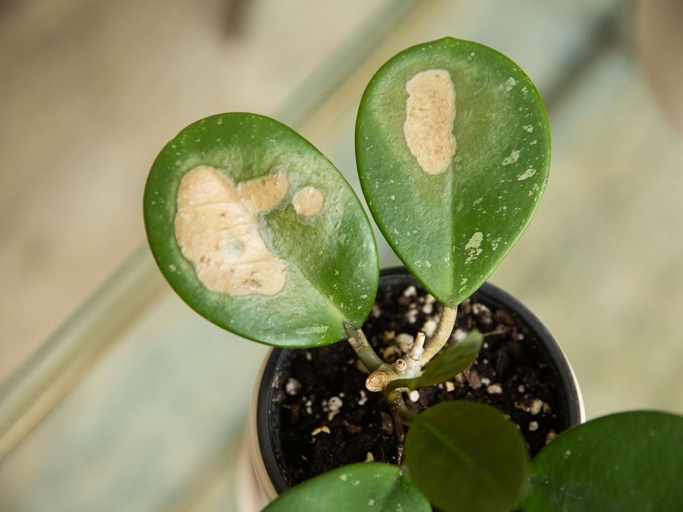
If your peace lily is getting too much sun, you’ll need to move it to a shadier spot. And if you think a nutrient deficiency might be to blame, you can try fertilizing your plant. If it’s not getting enough water, increase your watering schedule.
If you can’t figure out what’s causing the browning, or if the problem persists despite your best efforts, it’s best to consult a professional.
Browning At The Base of The Plant, Older Leaves Or Petioles
If you notice browning at the base of your plant, older leaves or petioles, it is likely due to one of two things: either the plant is not getting enough water, or the plant is getting too much water.

If the plant is getting too much water, the leaves will also begin to turn brown, but in addition, the roots will start to rot. The best solution in this case is to decrease the frequency of watering and make sure that the plant is not sitting in water. If the plant is not getting enough water, the leaves will begin to turn brown and wilt. The best solution is to increase the frequency of watering.
Peace Lily Brown Spots on Flowers
There are a few possible causes and solutions. If you notice brown spots on your peace lily’s leaves, don’t panic.
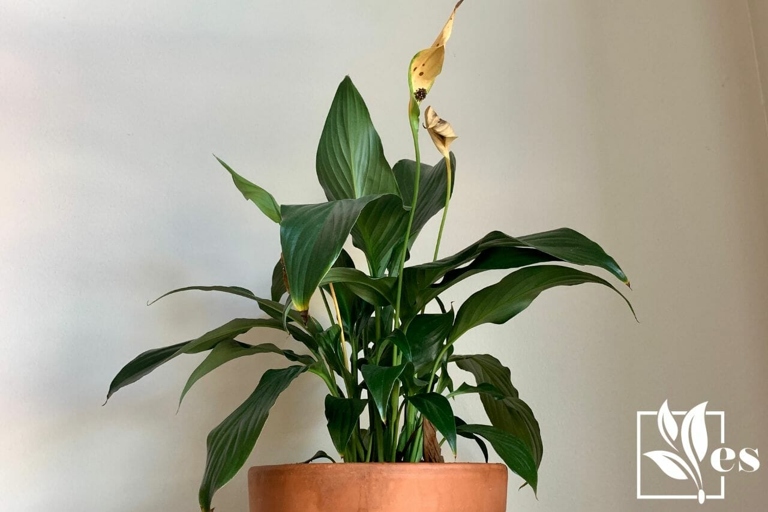
Peace lilies are native to the shady rainforests of South America, so they’re not used to a lot of sun. If you think this might be the problem, try moving your plant to a spot that gets less light. One common cause of brown spots is too much direct sunlight.
Another possible cause is overwatering. Peace lilies like to be kept moist, but not soggy. The solution here is to let the soil dry out a bit between waterings. If the soil is too wet, the roots can start to rot, which can cause brown spots on the leaves.
If you can’t figure out what’s causing the brown spots, or if they don’t seem to be improving, you can always take your plant to a local nursery or garden center for help.
Browning of Mature Bloom in Middle Including Stem
Move your plant to a shadier spot and see if the brown spots go away. Peace lilies prefer bright, indirect sunlight, so if yours is getting too much direct sun, the leaves will start to brown. The first reason could be too much direct sunlight. If you notice brown spots on your peace lily’s mature bloom in the middle including the stem, it’s likely due to one of three reasons.

Cut back on fertilizing and see if the brown spots start to disappear. If the brown spots don’t go away after you’ve adjusted your watering schedule, the third reason could be that your peace lily is getting too much fertilizer. Peace lilies are susceptible to root rot, so it’s important to make sure you’re not overwatering them. Let the top inch or so of soil dry out before watering again. Too much fertilizer can burn the roots and leaves, causing brown spots. The second reason could be too much water.
Browning of Young Bloom Cause It to Never Open
Move your plant to a spot that receives bright light but no direct sun. First, the plant may be getting too much direct sunlight. If you notice brown spots on your peace lily (Spathiphyllum), it’s likely due to one of two reasons. Peace lilies prefer bright, indirect light and will scorch if placed in a sunny windowsill.
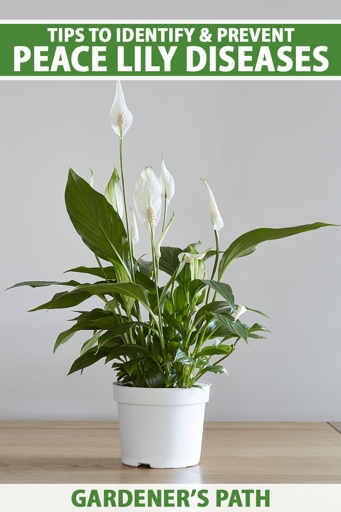
Let the plant dry out slightly and then resume watering on a regular schedule. Peace lilies are native to tropical rainforests and prefer consistently moist soil. Secondly, brown spots may be caused by too much water. If you notice brown spots after watering, it’s likely you’re giving the plant too much water. Allow the top inch of soil to dry out before watering again.
Brown Spots Appear On the Spathe As Lesions
These spots are called lesions, and they can spread quickly if left untreated. If you notice brown spots appearing on the spathe of your peace lily, it is likely due to a fungal or bacterial infection.
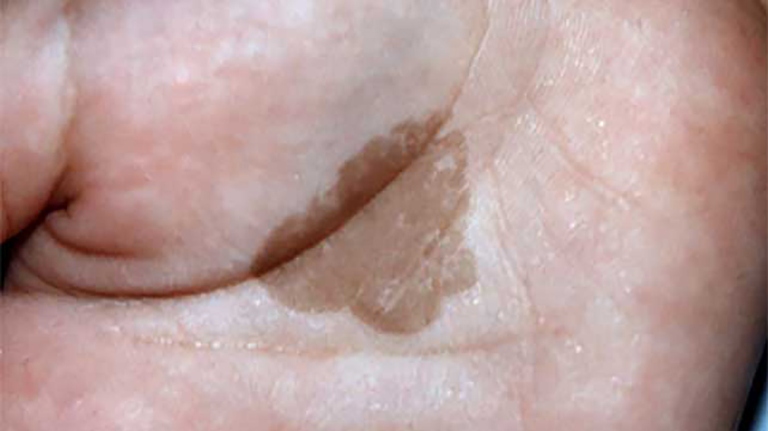
Be sure to follow the instructions on the label carefully. You can then treat the area with a fungicide or bactericide. To treat lesions on the spathe, you will need to remove the affected leaves and stems.
If the lesions are severe, you may need to replace the affected spathe. You can do this by cutting off the browned portion and replanting the peace lily in fresh soil.
By taking these steps, you can prevent the spread of lesions and keep your peace lily healthy and beautiful.
What Causes Brown Spots on Peace Lily Leaves
If you notice brown spots on your peace lily leaves, don’t panic! There are a few possible causes, and fortunately, solutions for each.
Peace lilies are native to tropical regions and do not do well in direct sunlight. If you notice brown spots after moving your plant to a sunnier spot, simply move it back to a shady area. One common cause of brown spots is direct sun exposure.
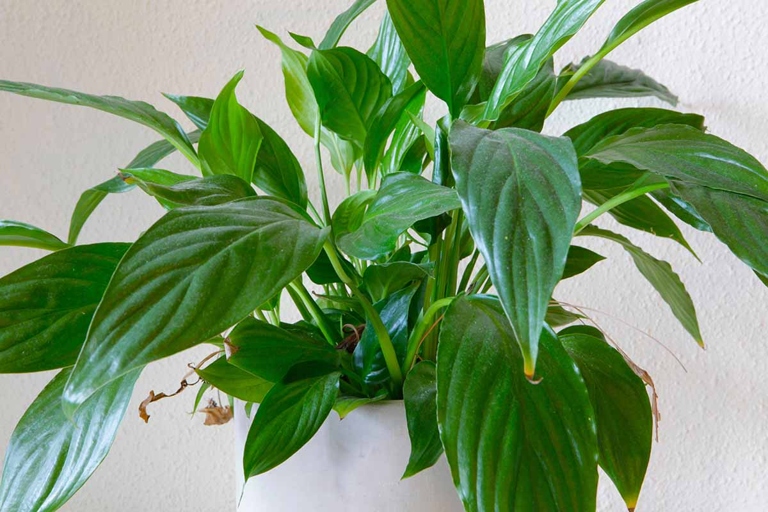
Another possible cause is overwatering. If you think this might be the problem, allow the soil to dry out completely before watering again. Peace lilies are sensitive to too much water and will start to brown if they are overwatered.
Finally, brown spots can also be caused by pests or diseases. If you notice any other symptoms, such as wilting or yellowing leaves, it’s best to consult a professional.
With a little troubleshooting, you should be able to figure out the cause of your brown spots and get your peace lily back to its healthy self in no time!
Excess Light
If you notice brown spots on your peace lily, it is likely due to excess light. Peace lilies are native to shady, tropical areas and do not do well in direct sunlight. Too much light can cause the leaves to scorch and turn brown.

If the brown spots are severe, you may need to cut off the affected leaves. If you suspect that excess light is the cause of brown spots on your peace lily, move it to a shadier location.
Mind the season
As the weather gets colder, many of us start to bring our plants indoors. But before you do, it’s important to check them for pests and diseases. One common problem is brown spots on peace lilies.
One is that the plant is getting too much sun. Another is that the soil is too dry. And finally, it could be a fungal disease. There are a few reasons why this may happen.
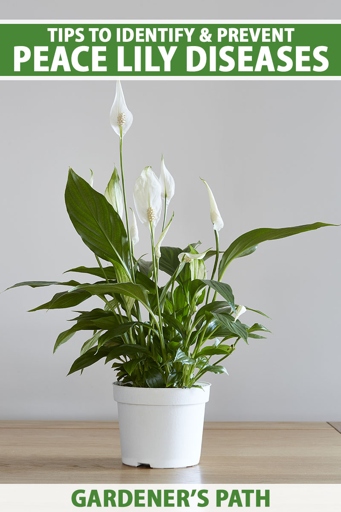
If you see brown spots on your peace lily, the first thing you should do is move it to a shadier spot. If the soil is dry, water it thoroughly. And if you think it might be a disease, you can try treating it with a fungicide.
With a little care, your peace lily will soon be looking green and healthy again.
Provide Shade
Peace lilies are tropical plants that need filtered light to thrive. Too much direct sunlight can cause the leaves to scorch, leading to brown spots. If you notice brown spots on your peace lily, it’s important to provide shade.
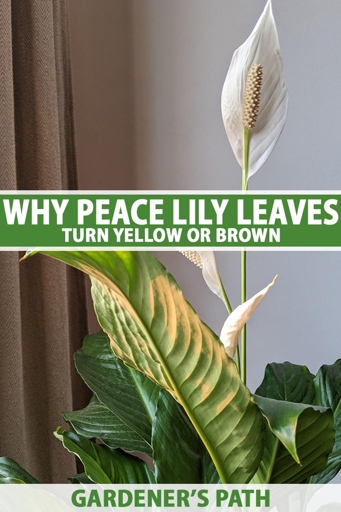
To provide shade for your peace lily, you can move it to a spot that gets indirect sunlight or place a sheer curtain over the window. If you live in a hot climate, you may need to provide shade for your peace lily during the hottest hours of the day.
By providing shade, you can help your peace lily stay healthy and prevent brown spots from forming on the leaves.
Use Artificial Light
If you don’t have enough natural light in your home, you can use artificial light to supplement. Peace lilies need bright, indirect light to thrive. If your peace lily has brown spots, it may be due to a lack of artificial light.
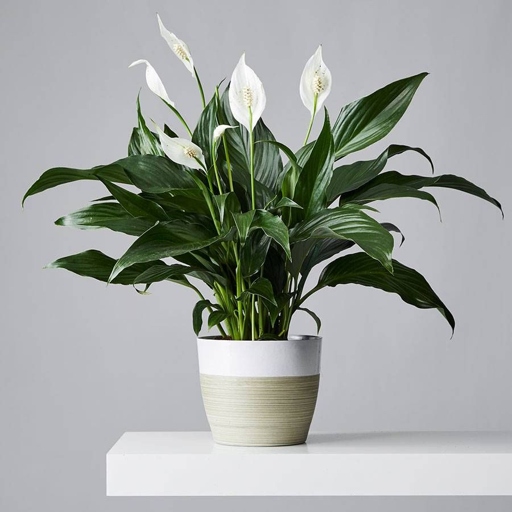
Grow lights come in a variety of shapes and sizes, so you can find one that fits your needs. You can use a grow light to provide your peace lily with the light it needs. Place the grow light about 12 inches from the peace lily and leave it on for about 12 hours a day.
With the right care, your peace lily will soon be looking its best. You should also rotate your peace lily every week or so to ensure that all sides of the plant are getting enough light. Brown spots on peace lilies are often caused by too much direct sunlight, so be sure to place your plant in a spot where it will get indirect light.
Temperature and Humidity
The best solution is to move the plant to a location that has more moderate temperature and humidity levels. If the temperature is too hot, the leaves will start to turn brown. If you notice brown spots on your peace lily, it could be due to the temperature or humidity. If the humidity is too low, the leaves will also start to turn brown.
Be Aware of Drastic Temperature Changes
sudden changes in temperature can cause the leaves to brown and wilt. If you notice brown spots on your peace lily, it could be a sign that the plant is experiencing drastic temperature changes. Peace lilies are tropical plants that thrive in warm, humid environments.
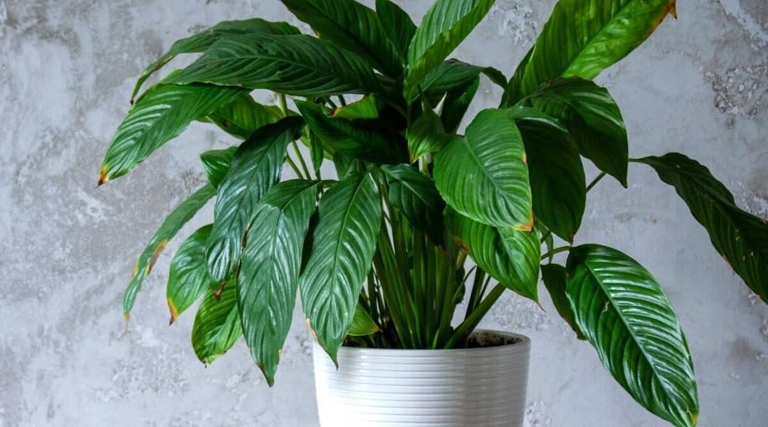
With a little care, you can keep your peace lily healthy and green for many years to come. And if you must move the plant, do so slowly and gradually so that it can adjust to the new temperature. To prevent this from happening, make sure to keep your peace lily in a stable environment. Avoid placing it near windows or doors where drafts can occur.
Avoid Hot or Cold Drafts
To avoid this, keep your peace lily away from windows, doors, and any other source of drafts. If you notice brown spots on your peace lily, it could be caused by a number of things. One potential cause is exposure to drafts, either hot or cold. If you suspect that your peace lily is getting too much or too little water, you can adjust your watering schedule accordingly. Be sure to water your peace lily regularly, and allow the soil to dry out between waterings. Another possible cause of brown spots is too much or too little water.
Increase Humidity At Home
Peace lilies are native to tropical regions and require high humidity to thrive. misting the leaves with water, or using a humidifier. If you notice brown spots on your peace lily, it may be due to low humidity. You can increase the humidity around your peace lily by placing it on a pebble tray or grouping it with other plants.
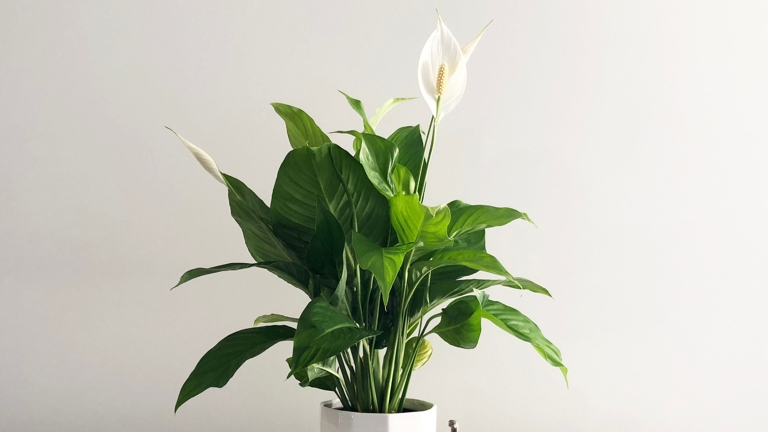
If you notice brown spots on your peace lily, it may be due to low humidity. They are native to tropical regions and require high humidity to thrive. Peace lilies are beautiful, low-maintenance plants that are popular houseplants.
Misting the leaves with water or using a humidifier will also help. You can increase the humidity around your peace lily by placing it on a pebble tray or grouping it with other plants. With a little extra care, your peace lily will soon be looking its best.
Pest Infestation
These pests suck the sap from the leaves, causing them to turn brown. The most common pests that attack peace lilies are aphids, mealybugs, and whiteflies. If you have brown spots on your peace lily, it is likely due to a pest infestation.

Be sure to read the label carefully and follow the directions. To get rid of pests, you can try spraying the plant with water or using a cotton swab dipped in rubbing alcohol. If these methods don’t work, you may need to use an insecticide.
Natural Control
If you have brown spots on your peace lily, it is likely due to one of two reasons: too much sun or too much water.

If the brown spots are on the leaves, it is probably due to too much sun. The best solution is to move them to a spot with indirect light. Peace lilies do best in indirect light, so if you have them in a spot that gets direct sunlight, they will start to develop brown spots.
The best solution is to let the soil dry out completely between waterings. If the brown spots are on the flowers, it is probably due to too much water. Peace lilies are very sensitive to overwatering and will start to develop brown spots on the flowers if they are getting too much water.
Mechanical Control
Mechanical control is the best way to fix this problem. If you have brown spots on your peace lily, it is likely due to a lack of water or too much direct sunlight.
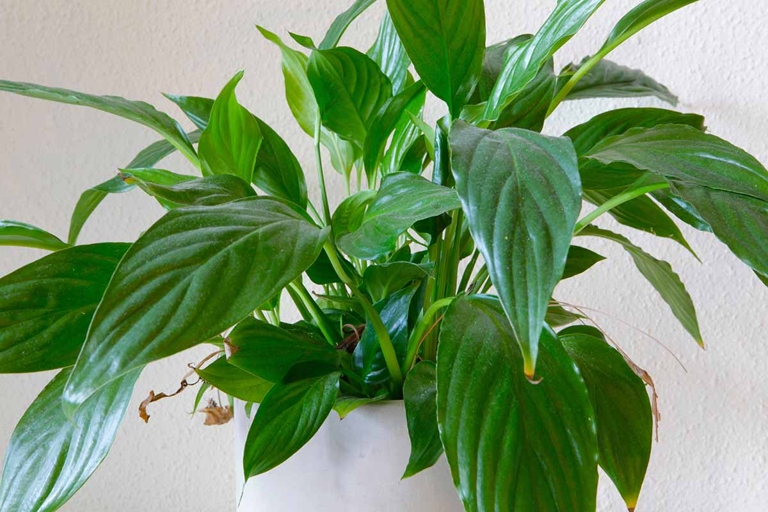
To water your peace lily, use a spray bottle to mist the leaves. If you live in a dry climate, you may need to water your peace lily more often. Do this once a week, or more often if the leaves start to droop.
Move it to a spot with less light. If the leaves start to turn brown, it means the plant is getting too much sun. To give your peace lily the right amount of sunlight, place it in a spot that gets indirect sunlight.
Chemical Control
If you’re noticing brown spots on your peace lily, it’s likely due to a lack of nutrients. Applying a fertilizer specifically designed for lilies can help to resolve the issue.
If you suspect this is the case, you can try flushing the soil with water to remove any build-up of chemicals. In some cases, brown spots on peace lilies may be caused by a chemical imbalance.

If brown spots on your peace lily persist, it’s best to consult with a professional. They can help to diagnose the problem and recommend the best course of treatment.
Bacterial Leaf Spot Disease
The disease is caused by a bacteria that infects the leaves of the plant, causing brown spots to form. The spots can range in size from small dots to large patches, and they may be surrounded by a yellow halo. Bacterial leaf spot disease is a common problem for peace lilies. The spots may eventually turn brown and drop off, leaving the plant vulnerable to further infection.

Finally, remove any infected leaves from the plant as soon as you see them. The bacteria that cause the disease thrive in wet conditions, so it’s important to keep the plant’s roots dry. First, make sure to plant your peace lily in well-draining soil. This will help to prevent the disease from spreading to other parts of the plant. Second, water the plant from the bottom up. There are a few things you can do to prevent bacterial leaf spot disease from occurring. This will help to keep the leaves dry and prevent the bacteria from spreading.
Use Sterilized Soil
If you notice brown spots on your peace lily, it’s important to take action quickly. Once you’ve done that, it’s time to sterilize the soil. The first step is to remove the affected leaves.
You can do this by mixing one part bleach with nine parts water. Then, soak the peace lily’s roots in the solution for about 15 minutes. After that, rinse the roots off with clean water.

The brown spots should start to disappear and the plant should start to look more vibrant. Once you’ve sterilized the soil, you should see a marked improvement in the health of your peace lily.
Avoid Watering At Night
If you notice brown spots on your peace lily, it is likely due to too much water. Watering at night can cause the leaves to stay wet for too long, which can lead to brown spots. To avoid this, water your peace lily in the morning so the leaves have time to dry before nightfall.
Avoid Overcrowding of Plants
When plants are overcrowded, they compete for resources and sunlight, which can lead to brown spots on the leaves. If you notice brown spots on your peace lily, it may be a sign that the plant is overcrowded.
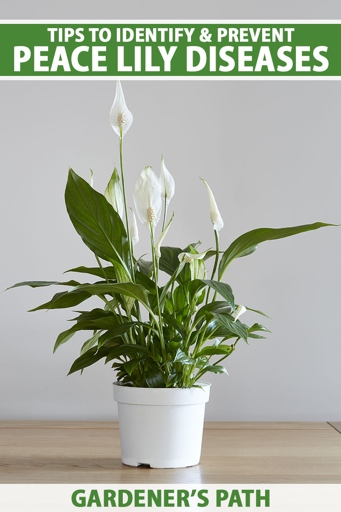
When replanting, choose a pot that is only slightly larger than the previous one. To avoid overcrowding, be sure to give your peace lily plenty of space to grow. And, be sure to thin out the leaves if they start to crowd the plant.
With a little extra care, you can avoid overcrowding and keep your peace lily healthy and happy.
Disinfect Your Tools
To disinfect your plant, start by removing any affected leaves. For example, make sure to water your plant regularly and keep it in a well-ventilated space. If you notice brown spots on your peace lily, it’s important to take action to disinfect your plant. Then, wipe down your plant with a mixture of water and dish soap. You can also use a diluted bleach solution to disinfect your plant. There are a few possible causes of brown spots, including pests, disease, and stress. Once your plant is clean, you can take steps to prevent brown spots from returning. Be sure to rinse your plant well after using any cleaning solutions.
Fungal Leaf Spot Disease
Fungal leaf spot disease is one of the most common problems that peace lily growers face. The disease is caused by a variety of fungi, which can attack the leaves, stems, and flowers of the plant. The most common symptom of the disease is brown spots on the leaves, which can range in size from small dots to large blotches. The spots may be surrounded by a yellow halo, and in severe cases, the entire leaf may turn brown and die.

This can be done by providing it with adequate light, water, and nutrients. Be sure to follow the directions on the label carefully, as some fungicides can be harmful to the plant if used incorrectly. The most important step is to keep the peace lily plant healthy and free from stress. If the plant is already infected, fungicides can be used to control the disease. There are a number of ways to control fungal leaf spot disease.
Rust
Rust is a type of fungal disease that affects many types of plants, including peace lilies. While rust is not usually deadly to plants, it can cause them to become stunted or misshapen. Rust can also spread to other plants, so it’s important to treat it as soon as possible. If you notice brown spots on your peace lily, it’s likely due to rust.
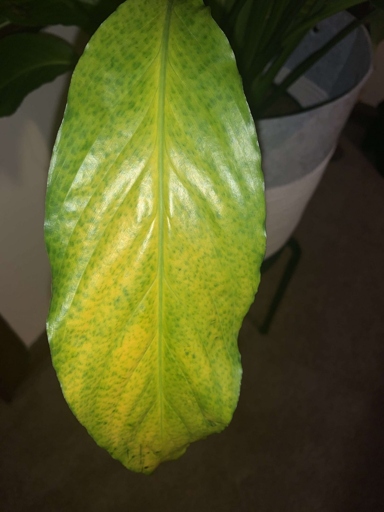
This will help stop the spread of the disease. There are a few things you can do to treat rust on your peace lily. Next, water your peace lily with a fungicide solution. First, try to remove any affected leaves. Finally, make sure to keep your peace lily in a well-ventilated area. This will help it to recover from the disease and prevent it from happening again in the future. You can make your own fungicide by mixing 1 part milk with 9 parts water.
Fertilizer Problem
If you notice brown spots on your peace lily, it’s likely due to a fertilizer problem. When you over-fertilize, the excess fertilizer can build up in the soil and cause a chemical reaction that burns the roots of the plant. This can lead to brown spots on the leaves of the plant. Over-fertilizing is the most common cause of brown spots on peace lilies.
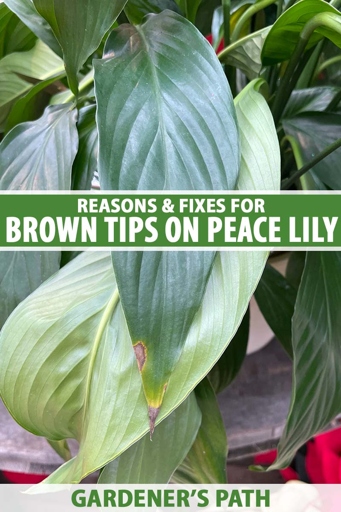
If you think you may have over-fertilized your peace lily, the best solution is to flush the soil with water. Be sure to use a light hand when fertilizing in the future, and only fertilize when the plant is actively growing. You can also try repotting the plant in fresh, sterile potting mix. This will help to remove the excess fertilizer from the soil.
Timing Of Application
If you notice brown spots on your peace lily, it is important to determine the cause so that you can take the appropriate steps to remedy the problem.
One common cause of brown spots on peace lilies is too much direct sunlight. If your peace lily is in a spot that gets a lot of sun, try moving it to a shadier location.
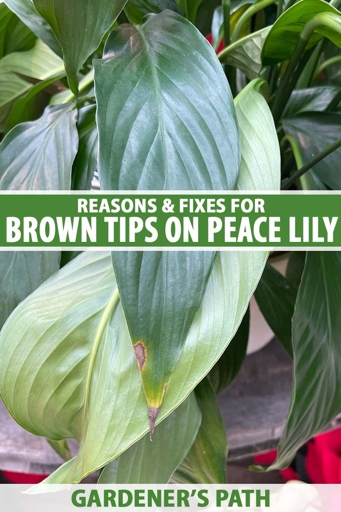
Another possible cause of brown spots is over-watering. Allow the top inch of soil to dry out before watering again. Peace lilies like to have moist soil, but if the soil is too wet, it can cause the leaves to turn brown.
Be sure to follow the directions on the fertilizer package, as too much fertilizer can also cause brown spots on the leaves. If you suspect that your peace lily has a nutrient deficiency, you can try fertilizing it with a balanced fertilizer.
Types of Fertilizer To Use
There are a few different types of fertilizer that can be used, and the best type to use depends on the plant’s needs. Fertilizer is important for keeping peace lilies healthy and preventing brown spots.
This type of fertilizer will release nutrients slowly, so it’s best to apply it every few weeks. Organic fertilizer is made from natural materials and is a good choice for peace lilies.
Inorganic fertilizer is made from synthetic materials and releases nutrients quickly. This type of fertilizer is best used sparingly, as too much can damage the plant.
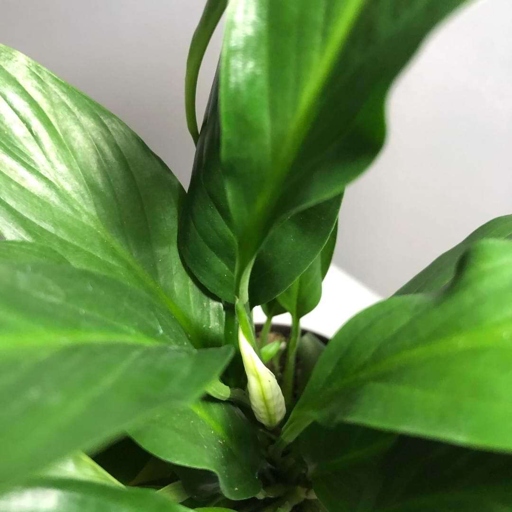
Peace lilies also need a balance of nutrients, so it’s important to use a fertilizer that has a mix of nitrogen, phosphorus, and potassium. A good ratio to use is 10-10-10.
Inconsistent Watering
As a result, they’re very sensitive to changes in moisture levels. Peace lilies are native to tropical regions and thrive in humid environments. When the soil around a peace lily becomes too dry, the plant will start to wilt and the leaves will begin to brown. If you’re noticing brown spots on your peace lily, it’s likely due to inconsistent watering.
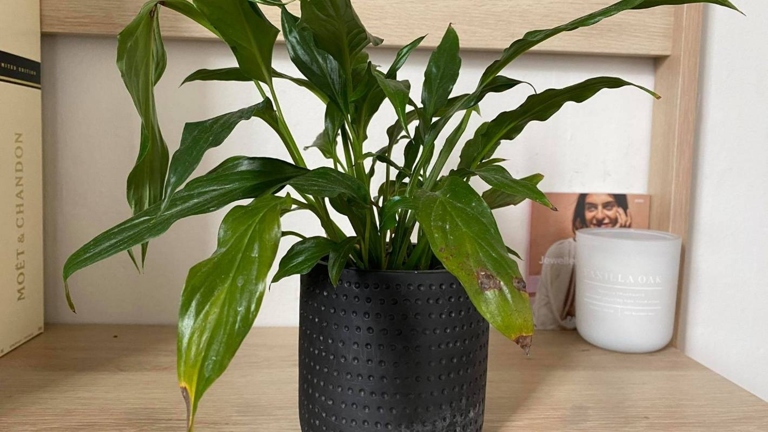
If you want to keep your peace lily healthy, it’s important to water it consistently. Be sure to empty any water that collects in the saucer beneath the pot, as peace lilies are susceptible to root rot. If you’re not sure how often to water your peace lily, it’s better to err on the side of too much water than too little. Water the plant whenever the top inch of soil feels dry to the touch.
Peace lilies are also a good choice for bathrooms, as the humidity from showers can help keep the plant healthy. In addition to consistent watering, peace lilies also benefit from regular misting. If you live in a particularly dry climate, you may need to mist your peace lily daily.
Keep The Soil Moist But Not Soggy
Is the soil too dry or too wet? Peace lilies need moist soil, but not soggy soil. If the soil is too dry, the brown spots are likely due to drought stress. If the soil is too wet, the brown spots are likely due to root rot. If you notice brown spots on your peace lily, it’s important to take a closer look at the plant’s soil.

If the brown spots are due to root rot, the plant will likely need to be replaced. Allow the top inch of soil to dry out before watering again. If the soil is too dry, water the plant deeply and evenly. If the soil is too wet, let the plant drain and dry out before watering again.
Adjust Watering Needs Depending On The Season
As the seasons change, so does the amount of water your peace lily needs. In the spring and summer, when the weather is warm and sunny, your plant will need more water to prevent it from drying out. During the fall and winter, when the weather is cooler and the days are shorter, your peace lily will need less water.
If the soil is dry, give your plant a good drink. Over-watering is just as harmful as under-watering, so it’s important to get the balance right. If the soil is moist, wait a few days before watering again. To determine how much water your peace lily needs, check the soil before watering.
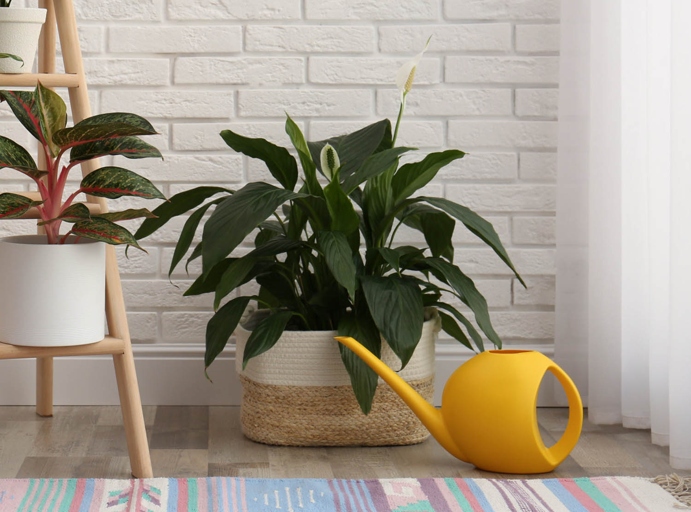
If the brown spots don’t go away, or if they start to spread, it could be a sign of a more serious problem. Increase the frequency of watering and make sure the soil is moist, but not soggy. If you notice brown spots on your peace lily, it’s a sign that it’s not getting enough water.
Water Quality
The most common problem is too much fluoride in the water, which can cause brown spots or even kill the plant. If you notice brown spots on your peace lily, it could be a sign of water quality issues.
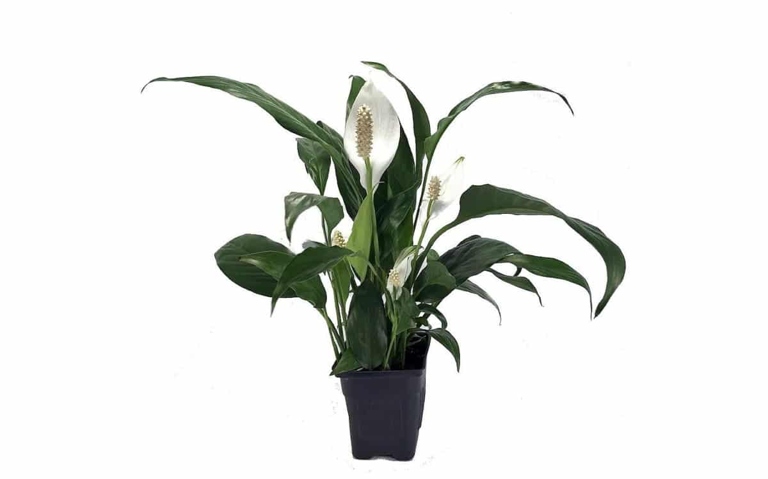
You can also try using a water filter to remove some of the fluoride. If you suspect your water is too high in fluoride, you can try using distilled water or rainwater for your plant. If the problem persists, you may need to switch to a different type of plant.
Again, you can try using distilled water or rainwater, or you can use a water filter. This is a common problem if you have city water. If the problem persists, you may need to switch to a different type of plant. Brown spots can also be caused by too much chlorine in the water.
Using Rainwater
If you have a peace lily that is starting to develop brown spots, you may be wondering what is causing this and how to fix it. One possible cause of brown spots on peace lilies is using water that is too high in chlorine. When watering your peace lily, be sure to use filtered or distilled water instead of tap water.
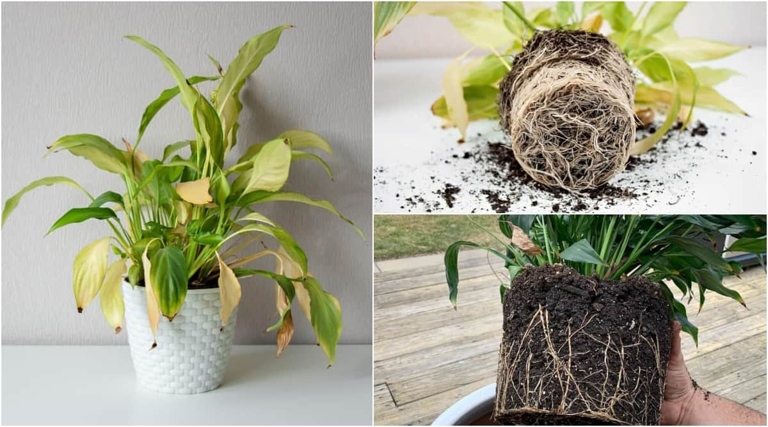
Another possible cause of brown spots is too much direct sunlight. If your peace lily is getting too much sun, try moving it to a shadier spot. If the brown spots are on the leaves, you can also try trimming off the affected leaves.
If your peace lily is not getting enough moisture, try misting it with water or placing it on a pebble tray. Finally, brown spots can also be caused by a lack of humidity. By increasing the humidity around your peace lily, you should see the brown spots start to disappear.
Let The Water Sit For 24 Hours Before Using Them
The first step is to let the affected leaves sit in water for 24 hours. If the brown spots are still visible, you can try using a leaf shine product to help restore the plant’s natural luster. If you notice brown spots on your peace lily, it’s important to take action immediately. This will help to rehydrate the leaves and prevent further damage. After 24 hours, remove the leaves from the water and gently pat them dry.
How Do You Treat Brown Spots on Peace Lily?
Next, trim off any dead or dying leaves. If all else fails, you may need to replace your peace lily. If you have a peace lily with brown spots, there are a few things you can do to try to save it. If the brown spots are caused by a fungal disease, you may need to treat the plant with a fungicide. First, check the plant for pests and remove them if present. Finally, give the plant some extra TLC by fertilizing it and making sure it has enough water.
Remove The Infected Leaves
These spots are usually caused by a fungal or bacterial infection, and if left untreated, the plant will eventually die. If you notice brown spots on the leaves of your peace lily, it’s important to take action immediately.
The first step is to remove any infected leaves. If the infection is widespread, you may need to remove all of the leaves. Cut them off at the base, being careful not to damage the healthy leaves.
Once the infected leaves are gone, you’ll need to treat the plant with a fungicide or bactericide. Follow the directions on the label carefully, as over-treating can be just as harmful as not treating at all.

With proper care, your peace lily will soon be healthy and beautiful once again.
Maintain Proper Growing Conditions
Third, fertilize your peace lily every month during the growing season. If you want to maintain proper growing conditions for your peace lily, there are a few things you need to do. First, make sure that you plant your peace lily in a pot that has drainage holes. Finally, make sure that your peace lily is getting enough light, but not too much direct sunlight. If you follow these tips, you should be able to maintain healthy growth conditions for your peace lily. Second, water your peace lily regularly, but don’t allow it to sit in water.
Adjust Water And Fertilizer Application
If your peace lily has brown spots, it could be a sign that you’re not watering or fertilizing it properly. Water your peace lily once a week, and make sure the soil is moist but not soggy. You can also add a bit of fertilizer to the soil to give your plant a boost. To fix the problem, start by adjusting your watering schedule. With a little care, your peace lily should be back to its green, healthy self in no time. Look for a fertilizer that’s specifically designed for peace lilies, and follow the directions on the package.
Treat With Fungicides, Bactericides
If you notice brown spots on your peace lily, it’s important to take action right away. These spots are usually caused by fungi or bacteria, and if left untreated, they can spread and kill your plant.
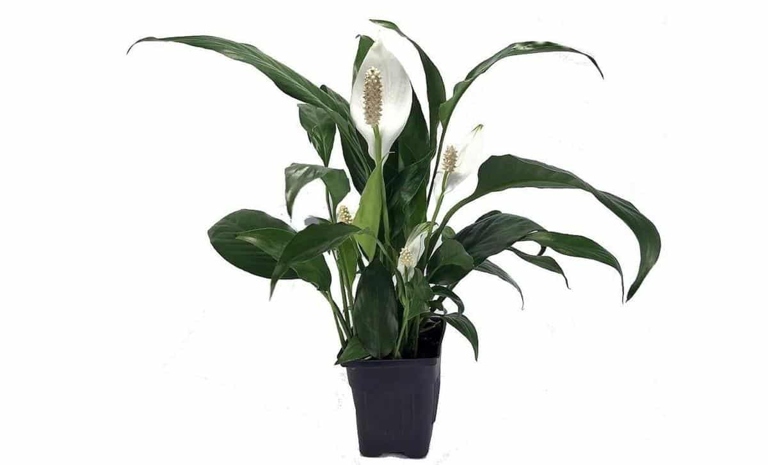
The good news is that brown spots on peace lilies can be treated with fungicides or bactericides. These products are available at most garden centers or online. Just be sure to follow the directions carefully, as over-application can damage your plant.
If the brown spots are small and isolated, you may be able to treat them with a household cleaner like bleach or vinegar. Just be sure to test a small area first, as some cleaners can be too harsh for peace lilies.
Whatever treatment you choose, be sure to keep an eye on the brown spots and act quickly if they start to spread. With a little care, you can keep your peace lily healthy and beautiful for years to come.
Why is the flower on my peace lily turning brown?
Third, the plant may be getting too much fertilizer. Second, the plant may be getting too much water. First, the plant may be getting too much sun. If you notice brown spots on your peace lily, it is likely due to one of several reasons. Peace lilies prefer indirect sunlight, so if it is in a spot that gets direct sunlight, move it to a shadier location. Peace lilies are sensitive to fertilizer, so it is important to use a diluted solution and to fertilize only every other month or so. If you are unsure of the cause of the brown spots, you can try moving the plant to a different location and/or changing your watering and fertilizing habits. Peace lilies like to be kept moist, but not wet. Be sure to check the soil before watering and only water when the top inch or so of soil is dry.
Should I cut the brown flowers off my peace lily?
If your peace lily has brown flowers, you may be wondering if you should cut them off. If you cut the brown flowers off, the plant will focus its energy on producing new, healthy flowers. Brown flowers are a sign that the plant is not getting enough light. If your peace lily is not getting enough light, the flowers will turn brown and eventually drop off. The answer is yes! Peace lilies need bright, indirect light to thrive.
Should I cut the brown tips off my peace lily?
However, if the brown tips are caused by too much water, you’ll need to let the plant dry out before watering it again. The brown tips are likely caused by a nutrient deficiency, which can be remedied by fertilizing the plant. If you notice brown tips on your peace lily, it’s important to take action to save the plant. In either case, it’s best to remove the brown tips with a sharp knife or scissors.
Frequently Asked Questions
1. What are brown spots on peace lily?
Brown spots on peace lily are usually caused by too much sun exposure or too little water. The spots can also be caused by pests or diseases.
2. How can I prevent brown spots on peace lily?
To prevent brown spots on peace lily, water the plant regularly and make sure it gets enough sunlight. You can also use a pesticide to prevent pests from causing the spots.
3. How can I remove brown spots on peace lily?
To remove brown spots on peace lily, you can trim off the affected leaves or use a fungicide to treat the plant.
4. What are the consequences of brown spots on peace lily?
Brown spots on peace lily can make the plant look unhealthy and can eventually kill the plant if left untreated.
5. Is there anything I can do to treat brown spots on peace lily?
Yes, there are several things you can do to treat brown spots on peace lily. You can trim off the affected leaves, use a fungicide, or water the plant more regularly.
Final thoughts
If you have brown spots on your peace lily, it is most likely due to one of the following reasons: too much sun, not enough water, or over-fertilization. The best solution is to move your plant to a shadier spot and water it more frequently. If you think you have over-fertilized your plant, flush the soil with water to remove any excess fertilizer. With a little care, your peace lily will be green and healthy in no time!
